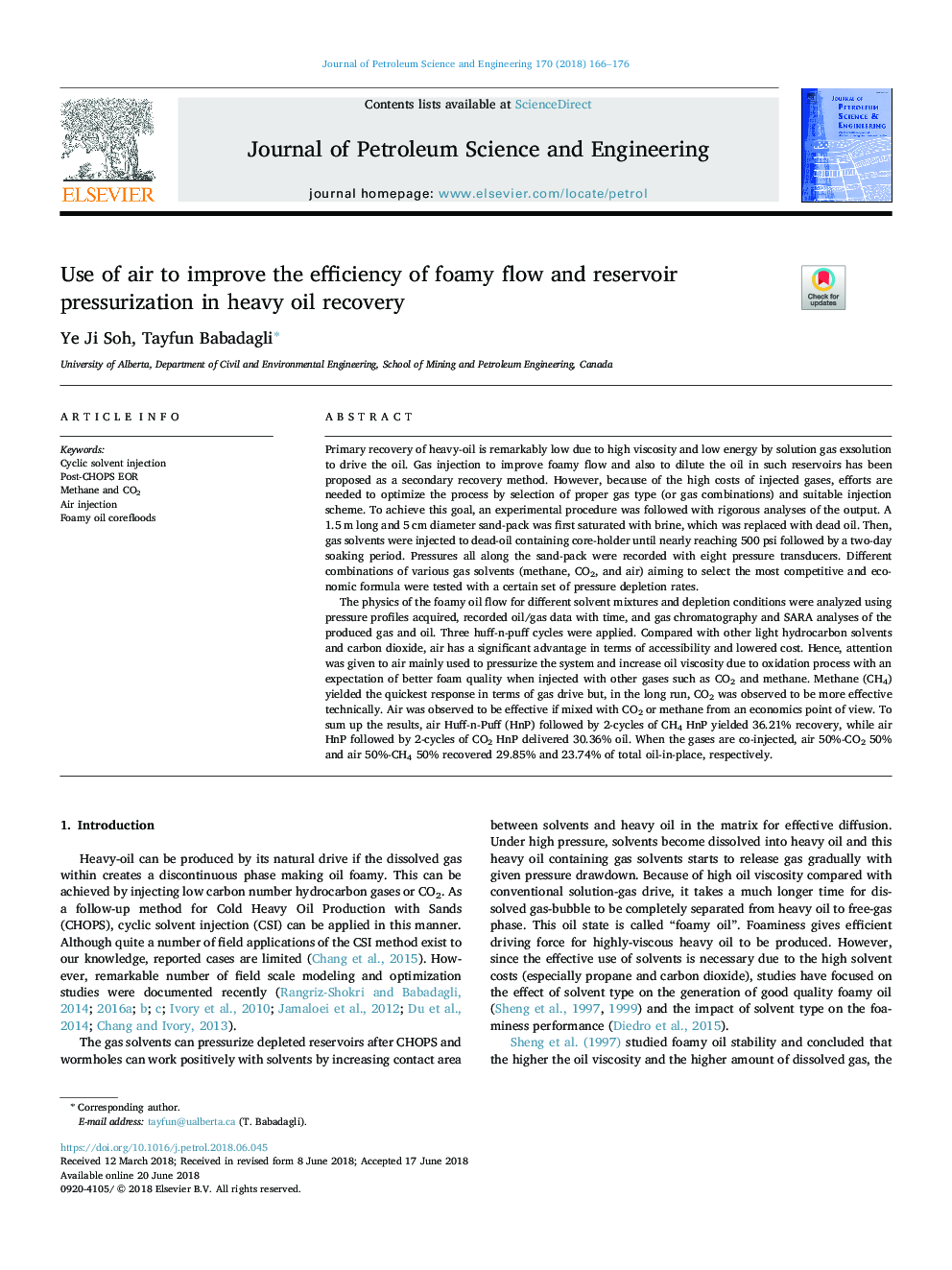| Article ID | Journal | Published Year | Pages | File Type |
|---|---|---|---|---|
| 8124425 | Journal of Petroleum Science and Engineering | 2018 | 11 Pages |
Abstract
The physics of the foamy oil flow for different solvent mixtures and depletion conditions were analyzed using pressure profiles acquired, recorded oil/gas data with time, and gas chromatography and SARA analyses of the produced gas and oil. Three huff-n-puff cycles were applied. Compared with other light hydrocarbon solvents and carbon dioxide, air has a significant advantage in terms of accessibility and lowered cost. Hence, attention was given to air mainly used to pressurize the system and increase oil viscosity due to oxidation process with an expectation of better foam quality when injected with other gases such as CO2 and methane. Methane (CH4) yielded the quickest response in terms of gas drive but, in the long run, CO2 was observed to be more effective technically. Air was observed to be effective if mixed with CO2 or methane from an economics point of view. To sum up the results, air Huff-n-Puff (HnP) followed by 2-cycles of CH4 HnP yielded 36.21% recovery, while air HnP followed by 2-cycles of CO2 HnP delivered 30.36% oil. When the gases are co-injected, air 50%-CO2 50% and air 50%-CH4 50% recovered 29.85% and 23.74% of total oil-in-place, respectively.
Related Topics
Physical Sciences and Engineering
Earth and Planetary Sciences
Economic Geology
Authors
Ye Ji Soh, Tayfun Babadagli,
